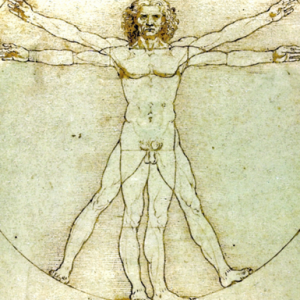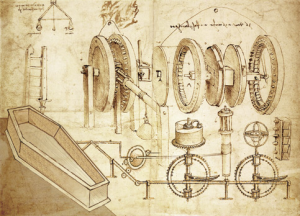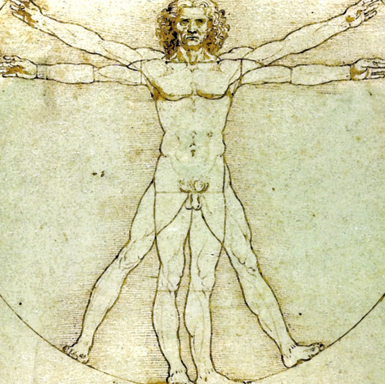No doubt. We are big fans of the great thinkers. Our top thinker of all time? It has to be Da Vinci. Why do you ask? For his abilities in learning activities, without a doubt. A mathematician. A scientist. An engineer. An anatomist. A creative and learner. Always giving lessons in creativity and learning.

Check out our thoughts on team leverage.
There are three classes of people: those who see, those who see when shown, and those that do not see.
Leonardo Da Vinci
Imagine you could go back in time and give your 20-year-old self a bit of advice on investing in the creative process, coming up with new ideas, and producing good, fun work.
What would you say?
Do you see? Maybe the lessons from Da Vinci will help. So what would be the lessons in learning and creativity derived from Da Vinci?
In General Stanley McChrystal’s efforts to transform the Special Forces in Iraq, he ran into challenges trying to get diverse teams to work together. Yet he saw that by building connections between units he could build a “team of teams” that was able to effectively coordinate action. In One Mission, his aide-de-camp, Chris Fussell, describes two strategies used to achieve this effect.
The first was to leverage high-performing liaison officers to build personal connections among disparate units. The second, called the “O&I” forum, was a daily video conference that was designed to create informal connections between officers at an “operational cadence.” Since leaving the military, McChrystal and Fussell have had similar success implementing these strategies in civilian organizations at their consulting group.
Here are the ones we continually come back to:
Learning activities … sketching and note taking
Over his lifetime Da Vinci created 13,000 pages of sketches and notes. 13,000 pages. By hand, on individual sheets of paper. Design in the center, simple and done quickly, a label on top, annotations along the sides, arrows pointing to key content. Sometimes a summary on the bottom.

Types of learning activities … divergent thinking first
Alone for the first few iterations different thought. Time to generate lots of ideas, and to reflect. Incubate ideas. Ask himself lots of questions. Always observing and studying. Think about the age of Da Vinci … no computers, few books, and few experts in fields of his interests. Just his ability to see and observe using notes to record for further study.
Related: How Good Is your Learning from Failure?
Creative learning methodology … convergent thinking later
Da Vinci often reviewed his work with respected peers after he had finished incubating his ideas. It was an opportunity to refine his thoughts. Time to collaborate. He was way ahead of his day in most topics, so many of his good ideas were rejected. He didn’t lose his desire or his persistence by the rejections. But remember … 13,000 sketches led to at least three masterpieces. Persistence is a key, isn’t it? Perhaps this is the most important reason we have less creative people.
Related post: 10 Extraordinary Ways for Learning to Learn
Save and revisit later
Most of Da Vinci’s sketches were done on individual sheets of paper. Not in a constrained notebook. He understood the value of multiple revisits and connecting, reconnecting, and grouping related facts and observations. An analogy expert. And an uncanny ability to connect several different views and ideas to create new ideas.

Learning and creativity will defer judgment
His basis of the study was simple observation and notes/questions on his views. He withheld judgments, either positive or negative, for as long as possible. Particularly his own. He appreciated that judgment would be a block to creativity and new ideas.
“The greatest deception men suffer is from their opinions”
Curiosity and questions
Perhaps Da Vinci’s greatest asset was his insatiable curiosity. The more observations and connection of ideas, the more questions and interest. And creative ideas.
Stimulate imagination
Da Vinci used divergent thinking to create lots of ideas. Lots of ideas, questions, and curiosity to stimulate his imagination. He minimized the limitations and constraints when using his imagination to think of the solution space to his many questions.
The bottom line
Do you see? Very, very few of Da Vinci’s learning activities and abilities are in the populace. But that doesn’t mean you can’t learn to be creative … it can be learned. Can you use these lessons to learn to see or see better? Give it a try. Practice and be persistent. Stick with it, and over the long haul, you will see some real dividends.

Have you found additional ways for learning and creativity? Have a story on your experiences to share with this community?
Like this story? Follow Digital Spark Marketing on LinkedIn or Google+ for 3-4 short, interesting blogs, stories per week.
Need some help in capturing more improvements for your staff’s teamwork, collaboration, and learning? Creative ideas in running or facilitating a collaboration or continuous learning workshop?
Call today for a FREE consultation or a FREE quote. Learn about some options to scope your job.
Call Mike at 607-725-8240.
All you get is what you bring to the fight. And that struggle gets better every day you learn and apply new ideas.
When things are not what you want them to be, what’s most important is your next step. Call today.
Test. Learn. Improve. Repeat.
Are you devoting enough energy continually improving your continuous learning?
Mike Schoultz is the founder of Digital Spark Marketing, a digital marketing and customer service agency. With 40 years of business experience, he blogs on topics that relate to improving the performance of your business. Find them on G+, Twitter, and LinkedIn.
Digital Spark Marketing will stretch your thinking and your ability to adapt to change. We also provide some fun and inspiration along the way. Call us for a free quote today. You will be amazed how reasonable we will be.
More reading on learning from Digital Spark Marketing’s Library:
The Nine Most Valuable Secrets of Writing Effective Copy
10 Extraordinary Ways for Learning to Learn
